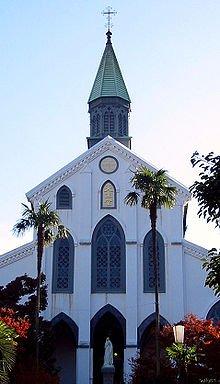Japan, 1549
August 15, 2015

DON VINCENZO writes:
It was on the Feast of the Assumption, August 15, 1549, that the Basque Jesuit priest, the future St. Francis Xavier, came ashore at Kagoshima on the southern island of Kyushu of Japan; the first of many missionaries who came afterwards. For nearly 50 years, Jesuit and Franciscan missionaries converted untold tens of thousands of Japanese, including “daiymos” or feudal lords. Those conversions angered the “bafaku,” or Shogun, for he sensed that Christian Japanese, including the daiymos and their samurai followers, would offer their primary allegiance to the Church. The Shogun, Hideyoshi, then began the relentless persecution of Christians (there were no Protestant missionaries at the time), and in February, 1597, he ordered the crucifixion of 26 Catholics, including several missionaries.
The surviving Japanese Catholics, known as “kakure,” or “hidden Christians,” went underground, and remained there until the emperor’s emancipation in the 1870s, but in their homes, Mary was not forgotten: she was disguised in the form of a female Buddhist deity called Maria-Kannon.
When the first Christian missionaries were allowed back into Japan in the 1860s, they were forbidden to serve Japanese believers. Despite that restriction, Fr. Bernard Petitjean, a French priest, was approached clandestinely by a group Japanese Catholics and asked if he was a true priest. When he answered positively, the very first question that a member of the Japanese group asked was where was the statue of Mary in the church?
Fr. Petitjean’s Oura church still stands in Nagasaki. A visitor will, prior to entry, see the statue of Mary. She was never forgotten.
